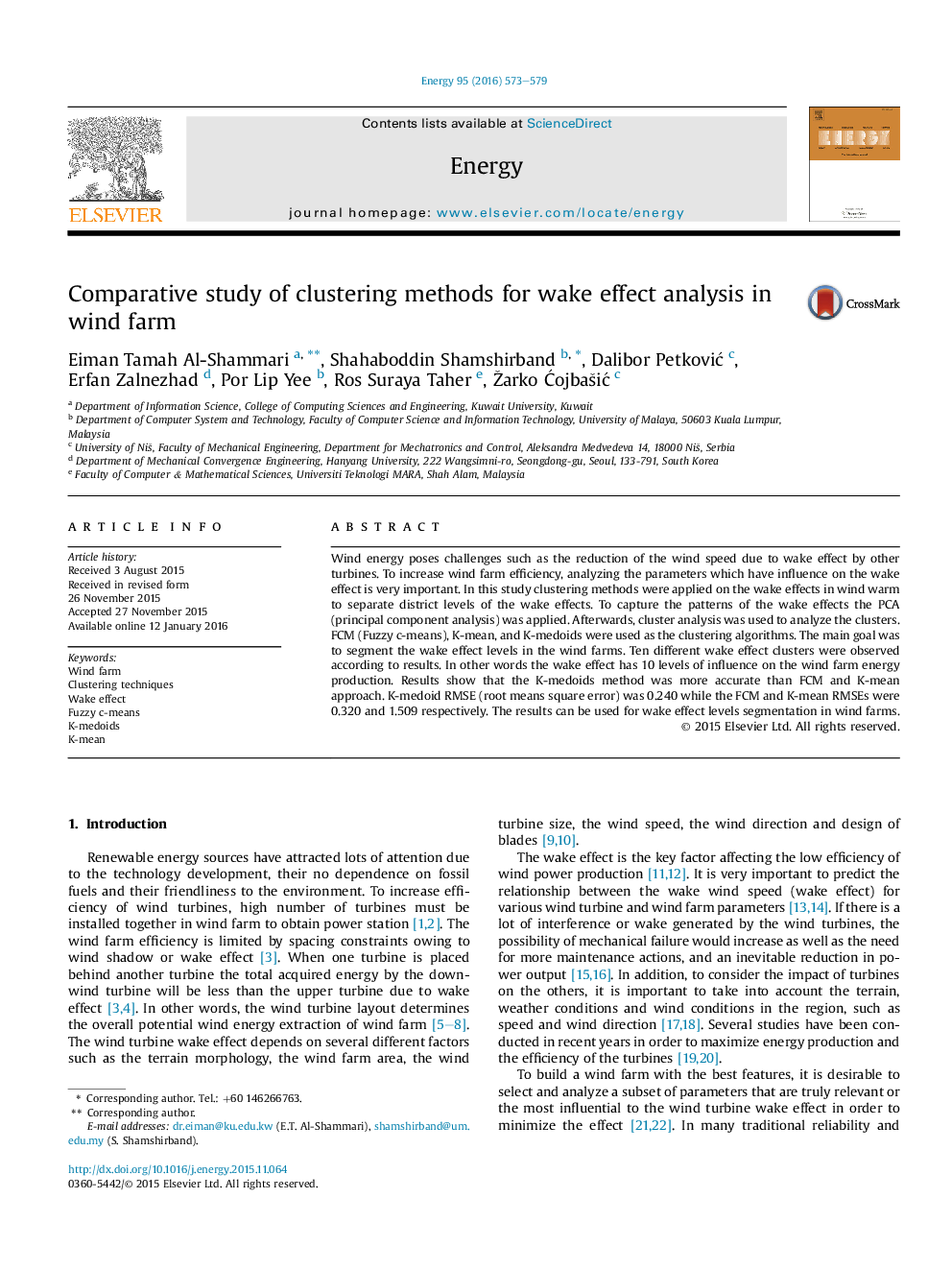| Article ID | Journal | Published Year | Pages | File Type |
|---|---|---|---|---|
| 1731459 | Energy | 2016 | 7 Pages |
•Aerodynamic interactions between the single turbines.•The effect of interactions between turbines.•Comparison of clustering methods application for wind farm wake effect analysis.•To select the number of wake effect levels in the wind farm.
Wind energy poses challenges such as the reduction of the wind speed due to wake effect by other turbines. To increase wind farm efficiency, analyzing the parameters which have influence on the wake effect is very important. In this study clustering methods were applied on the wake effects in wind warm to separate district levels of the wake effects. To capture the patterns of the wake effects the PCA (principal component analysis) was applied. Afterwards, cluster analysis was used to analyze the clusters. FCM (Fuzzy c-means), K-mean, and K-medoids were used as the clustering algorithms. The main goal was to segment the wake effect levels in the wind farms. Ten different wake effect clusters were observed according to results. In other words the wake effect has 10 levels of influence on the wind farm energy production. Results show that the K-medoids method was more accurate than FCM and K-mean approach. K-medoid RMSE (root means square error) was 0.240 while the FCM and K-mean RMSEs were 0.320 and 1.509 respectively. The results can be used for wake effect levels segmentation in wind farms.
